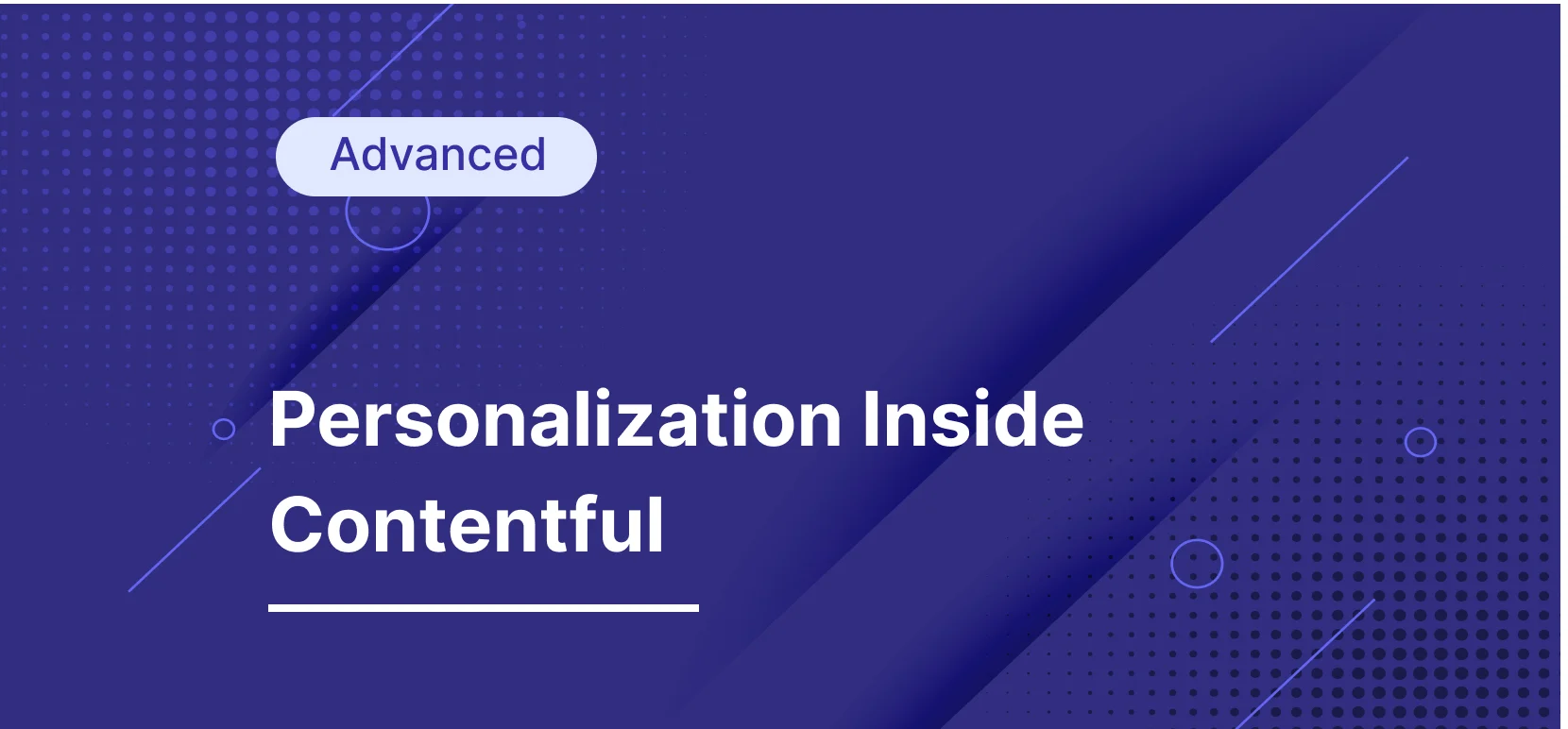- Personalization,
- Growth
How to Get Buy-In for Personalization Technology


If you’re reading this, you’re most likely already enlightened about the power of personalization. You know that, with smart use, the marketing and CX tool delivers:
A more relevant and valuable experience for your customer
More detailed customer insights from collecting, organizing, and analyzing data
Increased conversion rates and customer lifetime value
Once you and your team are convinced about making personalization an important part of your marketing strategy, the next step is to implement it.
The right technology solution is critical for building a successful personalization engine. But technology requires investment, and investment requires convincing decision-makers. So, before pitching a particular personalization technology to your boss, you need to be ready.
Prepare for everything you need to know about getting buy-in with this guide.
Find the Right Software First
Start by doing your research. Compare the options and consider all the features, difficulty levels, costs, and capabilities of each tool. Investigate which tool best meets your team’s needs and solves its current personalization challenges.
Criteria of a strong personalization tech tool to look for include:
Customer data capture
Audience segmentation
Built-in AI to help identify audience segments, personalize actions, and automate processes
A/B testing
Customer and performance analytics and insights
Ability to integrate with existing company tech tools
Easy to onboard and use for non-technical teams
Resources for developers, if used by technical teams
Attentive customer support
Ninetailed checks all of these boxes. Its AI-native personalization platform helps organizations boost growth and revenue by tailoring customer experiences. It allows users to create personalized experiences within their CMS without needing developers.
With AI-powered customer segmentation, Ninetailed builds detailed profiles and segments, integrating seamlessly with CRM and CDP systems. This enables the creation of comprehensive, real-time customer profiles based on demographic and behavioral data. Its A/B testing and performance tracking features ensure you make informed decisions, optimize your approach, and continuously improve results.
Make Your Case
Once you’ve identified the best personalization solution for your team, plan how you’re going to communicate why you need it and why it’s the best option to the powers that be. Break it down using these key points:
Demonstrate Your Current Workflow’s Problems and Areas for Improvement
Whether you’re investing in a personalization tool for the first time or want to change your current one, there are reasons and challenges that have led you to this point. Define what those are and clarify them for your boss.
For example, start by highlighting the inefficiencies in your current workflow. If you’re currently using multiple tools and workflows for data collection, segmentation, content output and distribution, tracking, and any other parts of the personalization process, that gets complicated. It causes data fragmentation and constant context switching, resulting in delays and missed opportunities.
Maybe you have limited developer resources, and your current system is too complex. This dependency on developer support slows down work, is hard to maintain, and can lead to bottlenecks. Often, the more complicated tools are also the more expensive ones.
Inaccurate data is another big issue. Accurate data is fundamental to a successful personalization program. If your data is stored and segmented in a different tool than where you’re managing and sending your campaigns, you may be using outdated data. So, you need a tool with real-time data capture and integration.
Explain How the Selected Software Solves the Identified Problems
Now it’s time to prove how the solution you’ve identified offers everything you need to improve your current processes and elevate your personalization efforts. For example, some key points you could emphasize include:
It’s an all-inclusive, comprehensive tool that covers all your data, segmentation, personalization, testing, and reporting needs
The tool is powered by AI technology that automates manual processes and suggests strategic personalization experiences based on user behavior and other factors.
The tool supports integration with tools like your CMS, CRM, and CDP
No developer expertise is needed, and it offers quick and seamless user training, onboarding, and operation
The quick implementation and real-time AI efficiency of the tool give you a competitive advantage. Companies that invest in personalization tools with rapid activation earn the best results
Show How Your Competitors Are Already Investing in Personalization
Another important point to highlight is if you’re currently behind your competitors in the personalization game and, thus, missing out on new and returning customers.
Whether your team is just starting to get serious about personalization or you need to upgrade your performance, it’s important to act sooner rather than later. The majority of customers expect companies to deliver personalized experiences and become frustrated when they don’t. That’s why more and more businesses are making it a priority.
Personalization accelerates growth. Faster-growing companies earn 40% more revenue attributed to personalization than the ones that are underperforming in personalization. Find examples of your company’s competitors that are excelling at personalization to show the level where you should be competing and the results you’re currently missing out on.
Present a Roadmap for the Proposed Tool and Updated Program
Once you’ve laid out all the reasons why the company should invest in the tool, provide a plan for how you envision implementing it and how the personalization program will evolve. Define these key considerations:
Implementation timeline and process owners: Present the estimated timeframe for each step of the process and who will be responsible for each stage.
Integration strategy: Explain how the new tool will integrate with your team’s existing systems, such as CRM and CDP platforms. Emphasize the ease of integration and how it will help in consolidating data for more accurate and comprehensive customer profiles.
Training and onboarding: Outline a plan for training the marketing team and other relevant stakeholders on the new tool. This includes initial training sessions, ongoing support, and resources for self-learning to ensure everyone can use the tool effectively.
Pilot program: Consider running a pilot program to test the tool’s capabilities on a smaller scale before a full rollout. This will help identify any issues early and collect feedback from the team to improve usage and processes.
Performance metrics and reporting: Define the key performance indicators (KPIs) the team will use to measure the success of the new personalization program. Those can include customer engagement, conversion rates, and revenue growth. Provide a plan for regular reporting and analysis to track progress and demonstrate the tool’s impact.
Continuous improvement: Emphasize the importance of ongoing optimization and continuous improvement. Explain how regular updates, feedback loops, and data-driven insights will be used to refine personalization strategies and maximize ROI.
Reiterate the Benefits
After you’ve pitched a solution — how it solves your current problems and how to implement it — seal the deal by showing some real success stories. Give some examples of how other companies use personalization to grow and any specific success metrics. The following are examples of the impact of personalization for Ninetailed customers.
The HR management company Personio revolutionized its ABM strategy with personalization. With Ninetailed, they tailored and targeted their website CTAs according to the company size of their audience. The results of this personalized messaging and user journey resulted in a 46% conversion increase for small businesses, 45% conversion increase for enterprises, and 16% more demo requests.
Ruggable is a successful consumer home interior brand that customized its paid ad and landing page content for its two primary audiences: cat owners and dog owners. This approach led to a 25% increased conversion rate.
The DTC pet food brand, Pets Deli, segmented its customers based on purchase history and offered each one unique prices and promotions to meet their needs and preferences. The result was a 51% increase in conversion rates.
The CPG giant Kraft Heinz partnered with Ninetailed to replace default home page banners, product features, and CTAs with ones tailored to the user’s geolocation. This personalized experience resulted in 78% more conversions, a 30% increase in engagement, and a 28% increase in customer satisfaction.
Why Ninetailed Should Be Your Next Personalization Tech Tool
The journey to achieving top-tier personalization requires understanding its importance and how the right tool will get you to your destination. By thoroughly researching and selecting the best personalization technology, you can streamline your processes, enhance customer experiences, and drive significant growth.
Get to know Ninetailed better so you can prove to your boss why it’s the best choice. Book a call with one of our experts, and join the party.
Get in touch to learn how Ninetailed personalization, experimentation, and insights works inside your CMS
